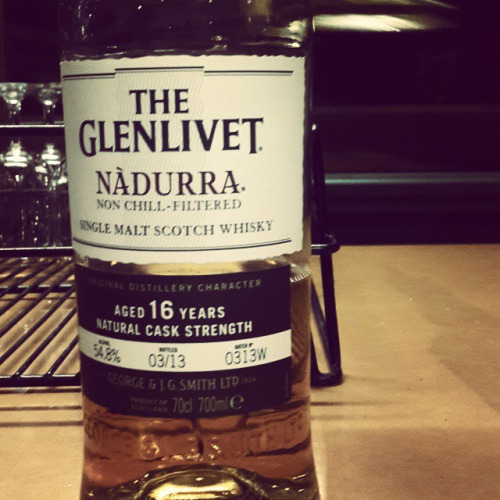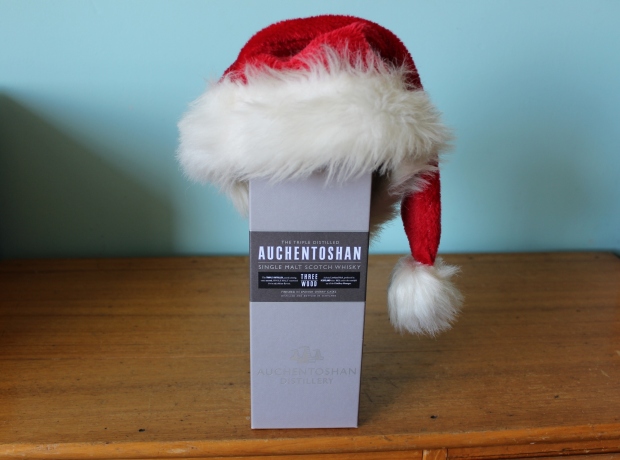
Posted by: Ted
So, acting on a whim, I popped over to sunny Tel Aviv in Israel the other day to do a spot of whisky tasting and a distillery tour.
Actually, that’s a lie. The government won’t let us leave Australia yet and I was sitting around freezing my tits off on a wintry Tasmanian evening. But, through the magic of the internet, I was still able to go venturing off into distant exotic lands to partake in a dram and a tour of Milk & Honey Distillery (M&H), Israel’s first whisky producer.

The Spirit Safe and Alba Whisky, the local distributor for M&H, were kind enough to send us a sample pack and an invite to join the Australian (digital) launch of M&H. Zooming in from my rather messy back room, I joined a group of fellow digital denizens to land in the rather more well appointed office of Ian McKinlay, Managing Director and highly knowledgeable chap at The Spirit Safe.
Greeting us with a Scottish brogue, softened by many years spent in the Antipodes, Ian made sure we were seated comfortably and then hit the magic button to beam us half-way across the globe to the shores of the Med Sea. Landing in Jaffa, the ancient port city from which Tel Aviv grew, we were met by the beaming faces of Tal Chotiner (International Sales) and Tomer Goren (Master Distiller) at M&H.
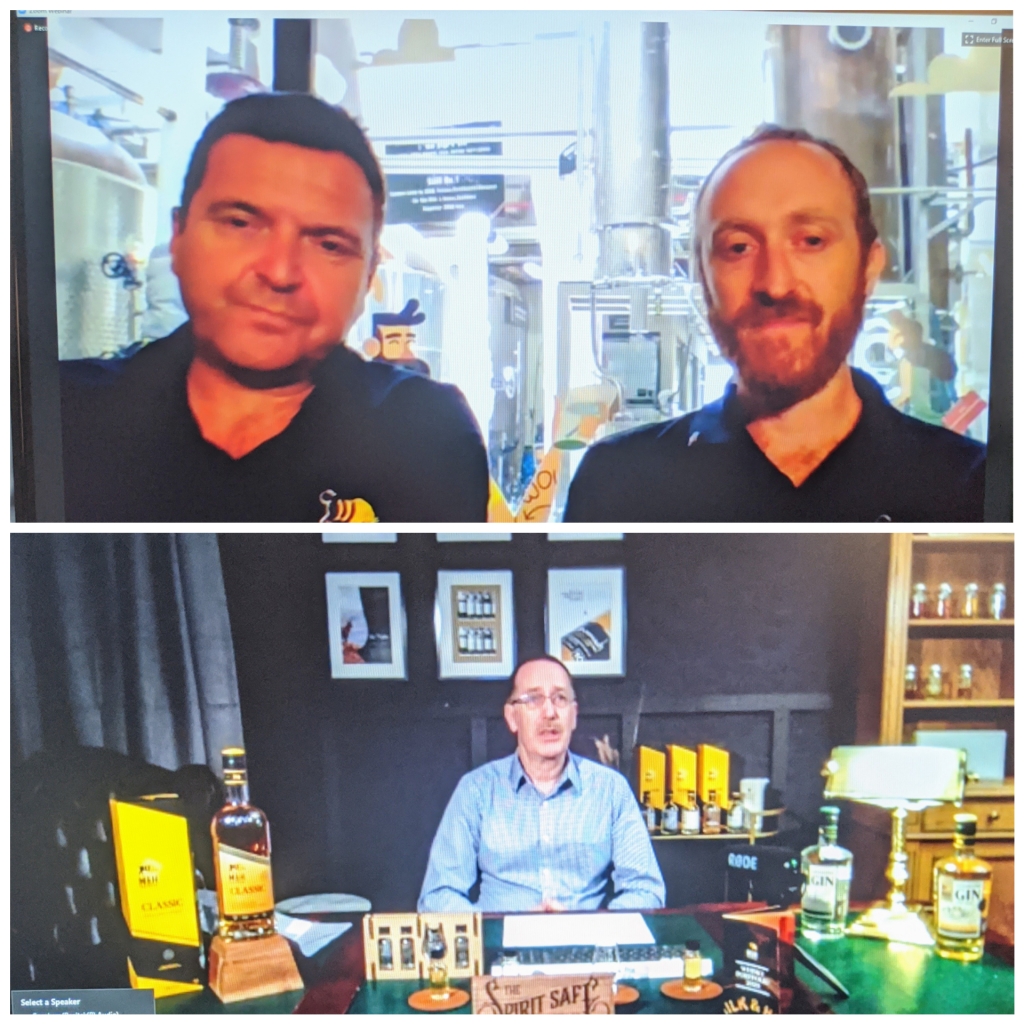
They were probably happy because it was 30°C and humid in Tel Aviv that day (like most days there during summer). Tal previously worked in various roles for Diageo, while Tomer worked at Tomintoul and Springbank, as well as completing his Master Distiller degree two years ago. After introductions, sitting in front of a webcam in an office, the lads leapt up to take us on a tour of the facility, Tal trailing Tomer with a smartphone. Technology eh!?
We wandered through the small visitor centre/bar, taking in the striking black and yellow colour scheme of M&H, before stumbling out into a sprawling, maze-like facility that used to be home to a bakery. Tal remembered visiting it when he was young and the pervasive aroma of the baking bread – “One good smell traded for another!” quipped Ian.


We visited the backyard, where water from the municipal supply arrives and is mixed with salts, the grain mill, the locally made one-tonne mash tun and the four large washbacks (two more are already in the pipeline). The usual fermentation time is 72hrs, but this drops to about 68hrs during summer. Interestingly, at least from an Australian perspective, the distillery doesn’t operate on the weekend because it is kosher, observing the Jewish Shabbat.

Next up were the stills, a 9000L beauty of a copper wash still that the team found in a shed in Romania, but probably originated in Spain, and a custom-built 3000L copper spirit still from Germany. Apparently they thought the wash still was rather smaller based on it’s picture, but it turns out the door it was sitting next to was actually a massive barn door. The lyne arms slope down at 45° angle to produce a very oily newmake that holds up well under fast maturation. Nearby was a small 250L copper pot belly/onion head still used for gin production.
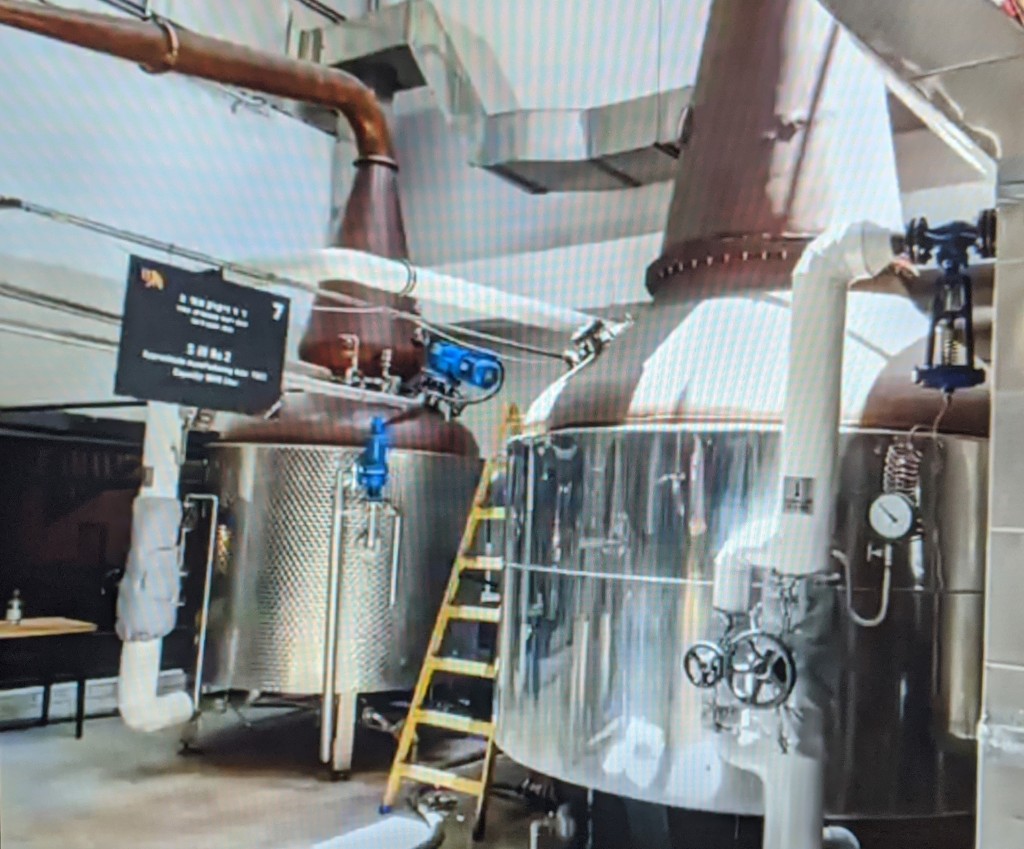
For the final part of the tour we were taken into the warehouses. #1 housed 200 or so privately owned casks, while #2 and #3 were home to a further 2000-odd production casks, looking very spiffy in M&H livery, with their black heads and yellow lettering. Most were ex-bourbon, but there were some other very curious editions that we’ll come back to shortly.


Back in the office, Tal and Tomer took us through a screen-shared presentation that delved further into the brand. The name of the distillery comes from the description of the Jewish promised land in the Bible as “a land flowing with milk and honey” (Ex. 3). The logo, a bull with black and yellow stripes, further references this (apparently they tried a cow first, but it just didn’t look as cool).
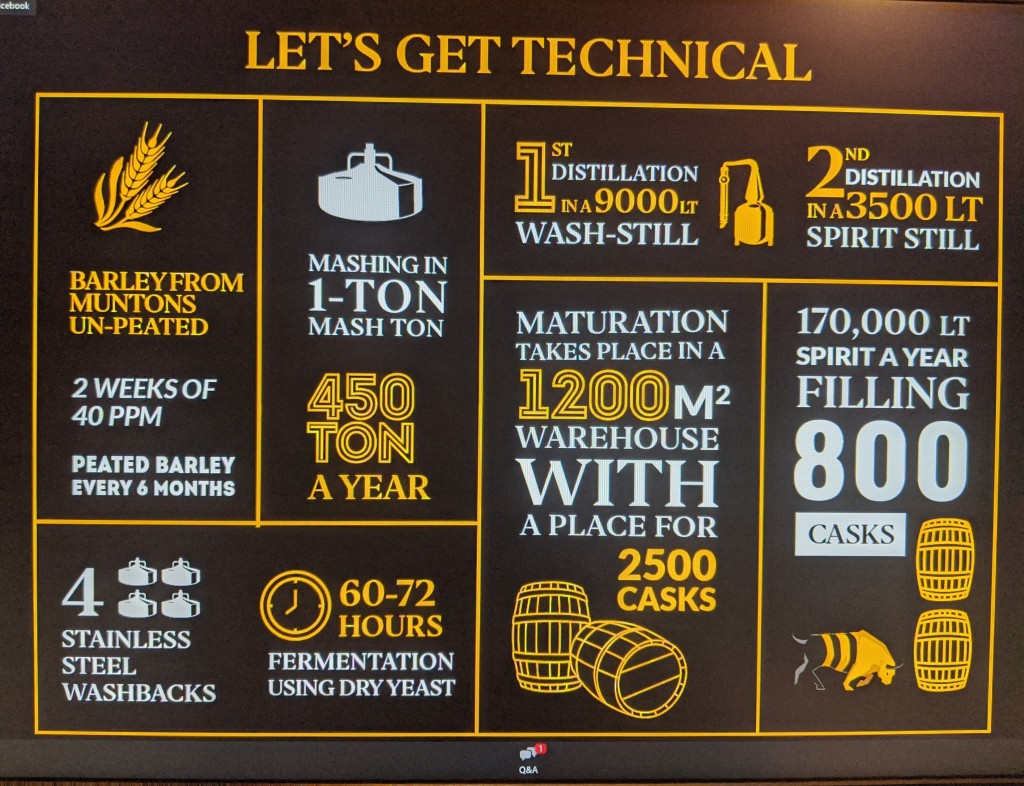
Climate plays a massive role for whisky maturation in Israel. For a country that is only 420km long and 115km wide, there are actually five distinct climate zones: Upper Galilee, Jerusalem Mountains, Mediterranean Coast, Desert and the Dead Sea, a collective described by M&H’s late mentor, Dr Jim Swan, as the ‘Climate Playground’. M&H make use of this and age barrels in various locations around the country, with interesting results.

For example, we were shown two bottles of whisky that were produced at the same time using identical spirit and barrels, but one aged in Tel Aviv on the coast and the other at the Dead Sea (which is 430m below sea level but very dry). The results were incredible, with the Dead Sea dram markedly darker than the Tel Aviv one. Even Jerusalem, which is only “45 minutes and 3000 years” away from Tel Aviv according to Tal, produces noticeably distinct results due to the difference in altitude (754m).
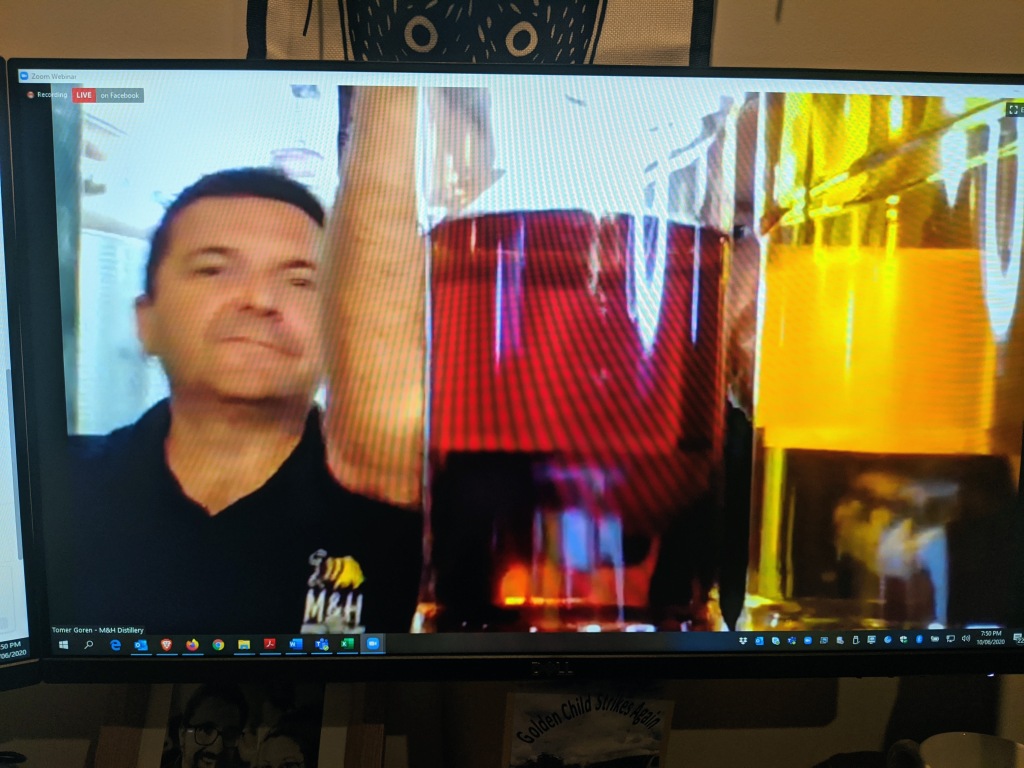
In terms of barrelling, the majority are ex-bourbon and STR (‘shaved, toasted and re-charred’, a technique developed by Dr Jim Swan), which develop lots of character in the first year before balancing out. Beyond this, more interesting casks such as locally produced kosher wine barrels are used, which is fitting, as according to Tomer “we have a 4000yr old wine culture, so it’s part of our DNA.”
They also have a seasoning project running in Spain with a Bodega that is able to produce kosher Pedro Ximenez and Olorosso sherry. Probably the most interesting barrels in use have previously held pomegranate wine, which according to Tomer is a signature Israeli flavour.

The whisky we were sent with our tasting pack was M&H’s ‘Classic Cask’, a 3yo aged in 75% ex-bourbon, 20% ex-red wine STR and 5% virgin oak and bottled at the magical 46% ABV. To me the nose was oily, creamy and gooey, with peach, apricot, custard, butterscotch and marshmallow, while the mouth was dry, with toasted timber and wine. It was really different to anything I could think of, which I suspect was a product of the unique Israeli terroir and climate, but I really liked it.
Speaking of the climate, the high daily temperatures and humidity and cool night develop huge amounts of action in the barrels, meaning that maturity is reached very quickly. There is a price to be paid though, as the angels’ share is around 9-11% annually (and can even be as high as 25% in areas like the Dead Sea!!!). Ideally Tal and Tomer would like to see their larger barrels reaching around 4-7 years in Tel Aviv and 4 years in other areas.
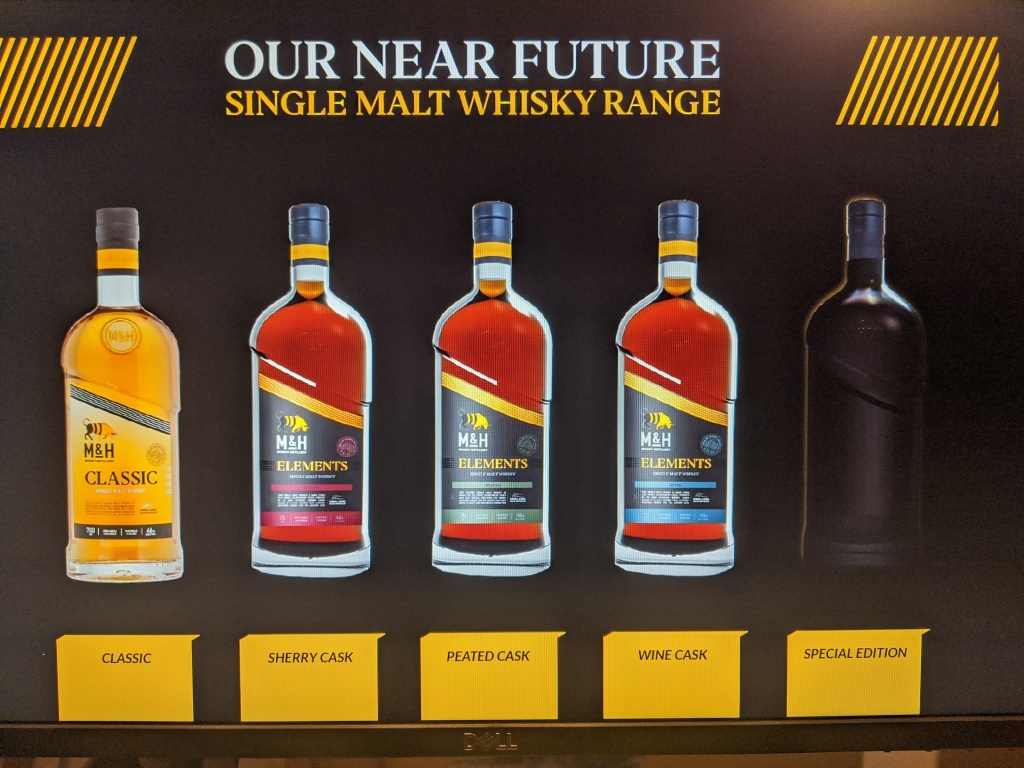
As well as the Classic Cask, the other drams in the core range will include ex-sherry, ex-wine and peated (using peated barley from the Czech Republic). Additionally, there will also be a revolving special edition range featuring interesting editions such as the ex-pomegranate casks and Israeli ex-chardonnay casks from the Jerusalem mountains.
The tour ended with a tasting of M&H’s Levantine gin, made using za’atar (a ancient native oregano), and their barrel aged gin under the cheerful gaze of Oded Weiss, M&H’s gin specialist. While Tal rustled up some G&T’s garnished with orange peel and fresh thyme, the team took some questions and reflected on the nature of their operation.

According to Tal and Tomer, in general Israeli consumption of alcohol is quite low, so M&H was founded with export in mind (which is lucky for Australia). “There aren’t really any rules in Israel around whisky production, so we decided to follow the most respected model out there, Scotland. That’s the reason we went for a whisky that was at least 3yo, as the international market would accept that more easily and allow us to build a solid reputation based on our quality.”
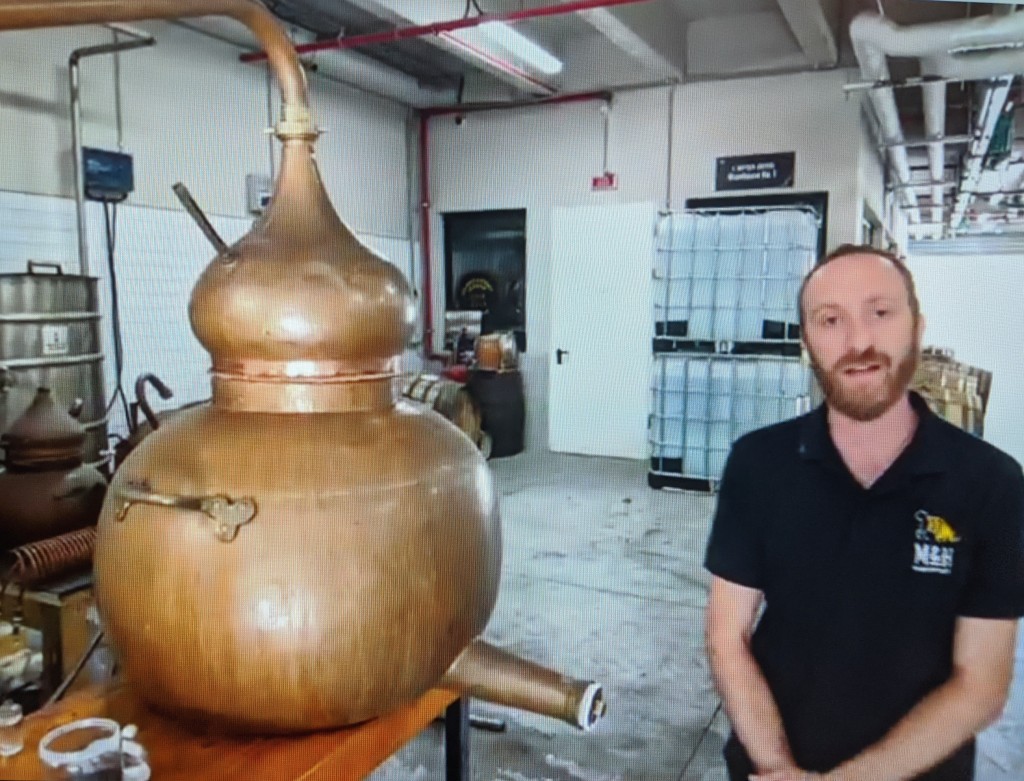
In Tal’s eyes, one of the major benefits of being a craft distillery, particularly in Israel, is the flexibility: “We throw ideas around as a team, like ‘wanna do a rum cask? Yeah, let’s do that!’. It’s about running ahead and thinking outside the box.” Tomer agrees: “Where we live is the culture capital of Israel and we’re able to draw influence from all over the world. Tel Aviv itself means ‘old ruins’ and ‘spring’, which I think is a reflection on how we make our whisky. It’s traditional ways with crazy new ideas.”
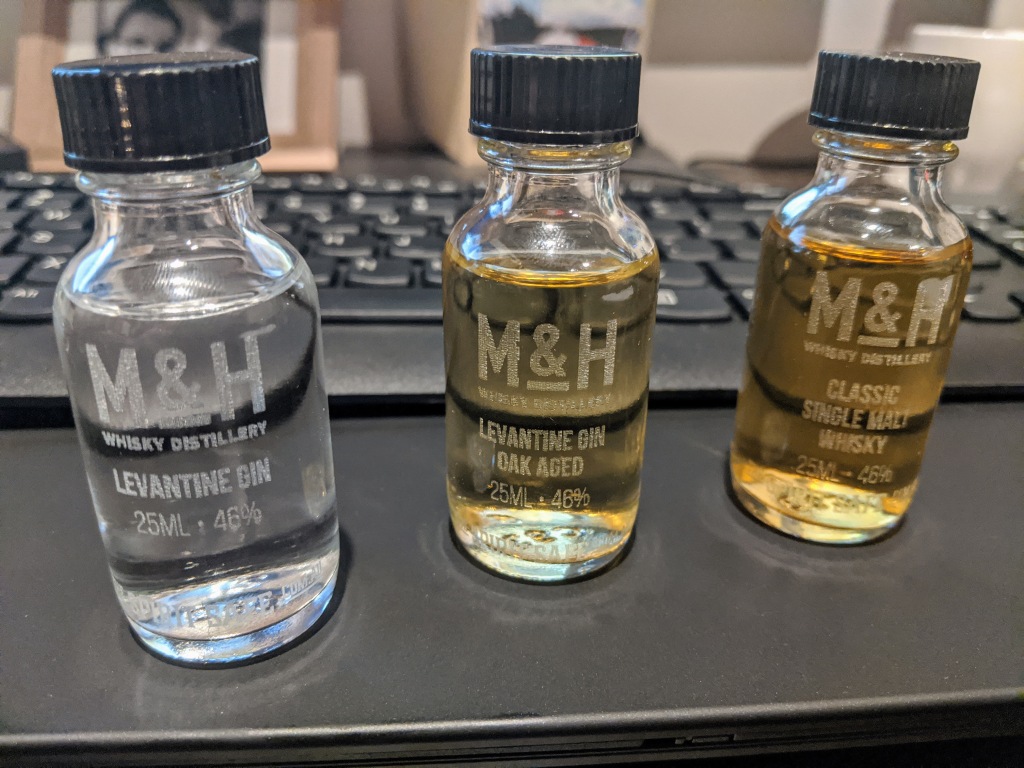
As Ian brought the session to a close, I reflected on the experience I had just had. I’ve been to internet tastings before, but I still think it was pretty amazing that I was able to sit here in Tassie, with everything that’s been going on in the world lately, and ‘visit’ a distillery in Tel Aviv in real time, something that I would probably never have a chance to experience otherwise (you never know though…). I suspect that live online events will become a staple in the future and allow the whisky community to connect with each other and share their passion in new and creative ways.
If there’s a silver lining to come out of COVID-19, it’s that what’s keeping us apart might just bring us together across the world like never before. And these days, that can only be a good thing, right?
You can purchase Milk & Honey Distillery’s products in Australia from The Spirit Safe















